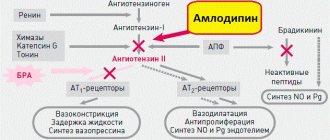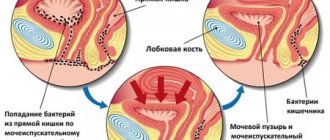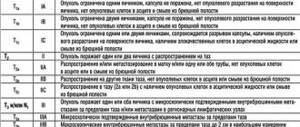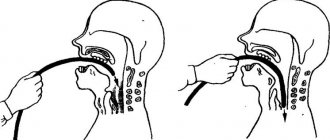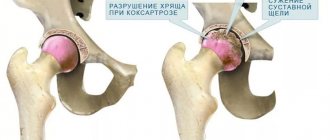High intracranial pressure
Ecology, bad habits of the expectant mother during pregnancy, heredity, abnormalities during pregnancy, difficult childbirth - all these factors create preconditions that overshadow the birth of a little baby with various diseases. High intracranial pressure is one of the symptoms that can accompany both congenital and acquired diseases in newborns and older children.
How is intracranial pressure formed?
Liquor ICP
The brain and spinal cord are washed by cerebrospinal fluid or cerebrospinal fluid. Liqueur is formed in the ventricles of the brain, performs the function of mechanical protection of the central nervous system organs, the function of nourishing nerve cells, and also removes metabolic products and toxins. Cerebrospinal fluid circulates freely through special openings and canals connecting the spinal cord and brain, and is absorbed in special anatomical formations - pachion granulations.
The cerebrospinal fluid is renewed up to four times per day. The pressure with which the cerebrospinal fluid “presses” on the inner walls of the ventricles of the brain and the spinal canal is intracranial pressure (ICP). In newborns and infants, intracranial pressure is 77-195 mmH20 or 1.5-6.1 mmHg.
Diagnosis of intracranial hypertension
A spinal tap is performed to diagnose and identify the infectious agent
The most informative method of diagnosis is methods of visualization of the structures of the brain and spinal cord. These include ultrasound and X-ray examination, computed tomography and magnetic resonance imaging. They allow you to see the result of a head blow (hematoma, fracture of the skull), formations (cysts, tumors), indirect signs of increased pressure (dilation of the ventricles of the brain), and specific criteria indicating inflammatory processes.
When the membranes and tissues of the brain are infected, the primary outcome is an increase in body temperature to high levels, possibly preceded by the presence of cold symptoms. In the case of meningococcal meningitis, a hemorrhagic rash appears on the child’s body, the detection of which requires seeking emergency medical help. When the membranes of the brain are involved in the inflammatory process, the child experiences pathological neurological reflexes.
A manifestation of increased cerebrospinal fluid pressure is swelling of the optic nerve and the resulting visual impairment, which can be determined by an ophthalmologist who checks the fundus of the eye. To clarify the diagnosis, in some cases a spinal puncture is performed, which makes it possible to accurately determine the figures of intracranial pressure and clarify the cause: identifying inflammatory changes, microorganisms, and specific cells.
Causes and diseases leading to increased intracranial pressure
Dropsy of the brain
Increased intracranial pressure in a child is a dangerous symptom that indicates serious disorders in the baby’s body. This condition occurs due to excess production of cerebrospinal fluid, or a violation of its absorption or due to obstructions in the outflow path. Diseases accompanied by symptoms of increased ICP can be divided into congenital and acquired.
Even in the womb, congenital hydrocephalus or cerebral hydrocephalus can develop, and then the child is born with symptoms of increased ICP. The causes of congenital hydrocephalus may be the following:
- congenital anomalies of fetal development (atresia of the cerebral aqueduct, cysts, aneurysms);
- heredity;
- infectious diseases suffered by a pregnant woman (rubella, mumps, syphilis, CMV, toxoplasmosis);
- bad habits of a pregnant woman (alcohol, smoking);
- severe gestosis, late toxicosis, difficult pregnancy;
- injuries during childbirth (hematomas, intraventricular hemorrhages).
Diseases that cause acquired increased ICP or hydrocephalus:
- neuroinfections suffered by the baby (meningitis, encephalitis),
- traumatic brain injuries,
- intracerebral tumors and tumors of the skull bones.
More often, hydrocephalus occurs in premature babies (less than 1.5 kg in weight) experiencing hypoxia, both in utero and during childbirth, as well as in newborns who were born prematurely (up to 35 weeks).
Video on the topic
Dr. Komarovsky about ICP syndrome:
Symptoms of intracranial pressure in children under 2 years of age are significant. It is very important for parents to pay attention to them in order to help their child cope with painful sensations. If the slightest symptoms appear that indicate the presence of ICP in the baby, you should immediately visit a specialist. This will help to conduct a thorough examination of the child’s condition in a timely manner and make a correct diagnosis in order to immediately begin appropriate treatment with medications in combination with vitamins. It will be successful only if parents approach this task responsibly.
Symptoms of high intracranial pressure in newborns and infants
Increase in head circumference
Children with congenital hydrocephalus are born with a disproportionately enlarged head. The fact is that the skull bones and sutures in newborns and infants are soft, and with an increase in ICP, the cerebrospinal fluid puts pressure on them, which is why there is a divergence of the skull bones and an increase in the size of the head. So, the important symptoms of hydrocephalus are:
- increase in head circumference, its rapid growth above age norms;
- bulging of a large fontanel;
- A clearly visible venous network on the baby’s scalp;
- Graefe's symptom - when the child looks down, several millimeters of the white membrane of the eye are visible above the iris. This symptom also has a literary name - “setting sun”.
Nonspecific symptoms include: increased regurgitation, vomiting, restless behavior, prolonged screaming, a pronounced venous pattern under the scalp, strabismus may be observed, infants begin to hold their heads later, gain weight poorly, lag behind in physical and psychomotor development, sleep poorly, often wake up and scream in their sleep.
When and how is ICP measured?
It is necessary to distinguish between symptoms of increased ICP in infants and older children. In infants, increased ICP is indicated by rapid head growth, protrusion of the eyeballs and downward abduction (the so-called “setting sun” sign). There is a refusal to drink, vomiting, regurgitation, bulging of the large fontanel, and separation of the cranial sutures.
In older children, symptoms of increased ICP include headaches, mental retardation, fatigue, vomiting, convulsions and strabismus. Such serious symptoms require additional diagnosis.
Infants undergo neurosonography using ultrasound of the skull through an open large fontanelle; older children are prescribed computed tomography and fundus examination. Papilledema is a sign of increased ICP. Cerebrospinal fluid pressure can only be determined during surgery, when a lumbar or intraventricular puncture is performed.
ECHO encephalography is an outdated and unreliable method for determining ICP.
Symptoms of high intracranial pressure in older children
Strong headache
The main symptoms of increased ICP in older children may be nausea, vomiting that is not associated with food intake and does not bring relief, and severe headache that increases in the evening and at night. Children may complain of visual disturbances, double vision, flashes of light in the eyes, decreased visual acuity, pain in the eyeballs, and tinnitus may appear.
Nosebleeds and convulsions develop. Intelligence may decrease from mild to severe. Neuroses, sudden mood swings, a tendency toward aggression, or passivity or inactivity may occur. Dizziness, gait disturbance, and a rise or fall in blood pressure may occur.
Symptoms
It is quite difficult to recognize a slight increase in intracranial pressure in a child. Symptoms of hypertension syndrome are often nonspecific. They can be confused with other manifestations found in many inflammatory diseases.
Increased intracranial pressure can be recognized by the following clinical signs:
- Increase in head size . This symptom is especially pronounced in newborn babies. In severe hypertension, the size of the head may exceed age norms by several centimeters.
- Changing the eye sockets. The eyes protrude forward quite strongly. The upper eyelids usually cannot close tightly. This symptom can be identified independently. In babies, the irises of the eyes are clearly visible during sleep.
- Distinct pulsation of a large fontanel. This symptom occurs in newborn babies. Upon examination, the large fontanelle protrudes slightly above the scalp.
- Strongly protruding veins. They are especially pronounced in children in the first days after birth. When hypertension syndrome appears, the veins become overcrowded and are very clearly visible.
- Increased regurgitation. Quite a characteristic symptom for newborns. An increased level of intracranial pressure leads to compression of all vital centers that are responsible for the basic functions of the body. The baby may regurgitate food repeatedly throughout the day.
- Change in general condition. Kids become very restless. Lying on your back only worsens the painful condition. They feel much better in your hands. In a horizontal position, the filling of the veins increases significantly, which contributes to an increase in intracranial pressure.
- Sleep disturbance. Typically, babies have difficulty falling asleep. Sleep becomes shallow and easily disturbed. Usually a child cannot sleep for more than a couple of hours. He wakes up constantly during the night and may be scared. Usually this symptom is very pronounced in children aged 2-7 years.
- Violation of general mental and physical development. When examining such a child, the attending pediatrician notices that the baby’s health indicators are very different from age norms. Basic indicators of physical development in young patients with regular hypertension syndrome deviate greatly from normal values.
- The appearance of a headache. Its most typical increase is in the evening or towards night. In some cases, pain appears in children even after waking up. The headache is diffuse. The intensity can range from very mild to unbearable and depends on the severity of the underlying disease.
- Speech impairment. Doctors call this the term "aphasia." When the functioning of individual centers in the brain is disrupted, damage to the speech apparatus occurs. It becomes difficult for the child to find words. When speaking, he may confuse speech patterns or forget the simplest expressions.
- Constant nausea. In severe cases - vomiting. Usually it is one-time, quite abundant. Vomiting with intracranial hypertension is not at all related to the food that the child received the day before. Usually it does not bring a significant improvement in the child’s well-being.
- Difficulty remembering. School-age children have learning problems. Even simple tasks can cause significant difficulties for them. It is quite difficult for children with constant intracranial hypertension to concentrate on specific objects.
- Behavior change. The child, due to his painful condition, becomes very nervous and capricious. Many children refuse to eat and their appetite worsens. From the outside, such a kid looks quite depressed.
When are changes in intracranial pressure normal?
Increased ICP when crying
It should be noted that short-term surges in ICP are observed in a healthy child. They occur during such physiological conditions as crying, straining during bowel movements, excessive physical activity, standing on your head, walking on your hands. An increase in intracranial pressure is observed with laughter, fear, coughing, and vomiting.
After the child calms down and sleeps, the pressure normalizes and its value returns to its previous values. Thus, a short-term increase in ICP is not a pathology if it is provoked by the above situations. Such an increase in ICP should be considered as a variant of the norm.
Overdiagnosis of the symptom of increased intracranial pressure
Consultation with a pediatric neurologist
The term “high intracranial pressure” has become extremely common among caring mothers and grandmothers, as well as among doctors. Pediatricians do not skimp on making such a diagnosis to any overly active baby who refuses to eat, spits up, sleeps poorly, or screams in his sleep. Because of this, parents often panic and are prescribed treatment that the child may not need at all.
First of all, you need to understand that hyperactivity and high ICP have nothing in common. Regurgitation is a physiological phenomenon in children of the first 6 months due to insufficiently developed muscles of the esophagus; twitching and screaming in infants are also a variant of the norm. There is no need to over-diagnosis.
High intracranial pressure is a symptom of very serious diseases. If your baby has not had any injuries during childbirth, hypoxia, head injuries, he has not suffered a neuroinfection, congenital anomalies of the central nervous system, tumors, cysts have been excluded - the likelihood of confirming the ICP symptom is low. To clarify the diagnosis, it is necessary to consult with a pediatric neurologist and undergo a series of examinations.
Diagnosis and treatment of increased intracranial pressure in children
Routine ultrasound during pregnancy
Even in utero, fetal hydrocephalus can be detected during a routine ultrasound. In this case, dilation of the ventricles of the brain is diagnosed, accumulation of fluid in them, an increase in head circumference can occur even before birth, which serves as an obstacle to childbirth. In infants up to one year old, when the fontanel is still open, it is possible to perform an ultrasound of the brain or neurosonography; after the large fontanel has become infected, this method is not informative.
CT and MRI brain scans are also used in diagnosis. Measuring head circumference, examining the fundus of the eye, carefully collecting anamnesis, and interviewing parents also helps to establish the correct diagnosis. All of the above methods for diagnosing increased intracranial pressure are indirect. A direct diagnostic method is a lumbar puncture with the connection of a manometer that measures ICP. But this method is used according to strict indications and is carried out under aseptic conditions by highly qualified medical personnel.
Bypass surgery
Treatment of increased intracranial pressure is aimed at eliminating the cause of this syndrome, eliminating symptoms and combating complications. If high ICP has developed due to an inflammatory process in the brain, it is necessary to prescribe antibacterial drugs. For a hematoma due to trauma, a cyst or a brain tumor, neurosurgical treatment may be necessary.
In case of hereditary excess formation of cerebrospinal fluid, special shunts can be surgically installed in the abdominal cavity, in which case additional absorption of cerebrospinal fluid occurs in the peritoneum. Drug treatment is aimed at reducing blood pressure and preventing or eliminating cerebral edema; for this purpose, diuretics and hormonal drugs are used. To protect brain cells, neuroprotectors are prescribed.
Medicines are prescribed exclusively by a doctor, in a dosage taking into account the weight of the small patient and individual tolerance.
Diagnostic methods
An objective examination is required to make a correct and accurate diagnosis. Modern medicine has several methods that can confirm or refute the diagnosis of intracranial hypertension. The child must undergo echoencephalography and examine the fundus. If abnormalities in the structure of visual tissues are detected, an MRI is usually performed.
Neurosonography, which is a modern, fairly effective visual method for studying the brain, is often used for these purposes. But, according to many doctors, it can be used to misinterpret the information received. That is, this method is not always able to provide the most accurate and verified readings. In addition, it is not advisable to do neurosonography in the first 3 days from the birth of a baby, which is sometimes necessary.
As for echoencephalography, the most common mistake when performing it is that norms and indicators that were developed for older children are applied to infants. It should be noted that they differ between infants and adolescents, so one cannot be guided by such indicators, much less make any diagnoses based on them. It is also important to note that the standards used were obtained from examinations using the same equipment (manufactured by Siemens, Toshiba, and others), and in domestic medical institutions, Echo-12 equipment is mainly used. In addition to this, echoencephalography is in many ways inferior to more “advanced” methods.
Dopplerography is based on the study of vascular tone and blood filling. But this type of examination also has disadvantages - the data obtained is not always correct, since their accuracy is directly dependent on how the sensors are located and on the psychological well-being of the baby. It is more effective to use this method at the birth of a child. There are also examination methods in modern medicine such as axial computed tomography and magnetic resonance imaging. But they are also not 100% accurate, so they are not used by clinic staff very often.
Summarizing the above information, the conclusion suggests itself that none of the examination methods available to doctors today can provide high accuracy. However, all these methods complement each other, allow you to see the overall picture of the disease and provide invaluable assistance in making a reliable diagnosis.


